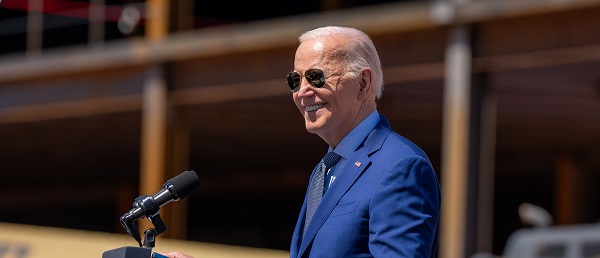Alberta
Woman shot as she rushed police with sword… investigators release details

From The Alberta Serious Incident Response Team (ALERT)
Investigation into fatality during RCMP encounter
On Sept. 23, 2019, the Alberta Serious Incident Response Team (ASIRT) was directed to investigate the circumstances surrounding the death of a 42-year-old woman that same day during an encounter with Strathcona County RCMP officers.
The investigation into the death of the woman continues; however, video recordings from the RCMP vehicles and audio recordings of the woman’s calls to RCMP provide some context to the events that occurred.
The woman placed two calls to RCMP for assistance that morning. At approximately 3 a.m., RCMP officers responded to a home in Sherwood Park in response to a complaint from the woman that she believed that someone was in her back yard. The woman advised she was in an abusive relationship. She expressed fear that someone associated with her boyfriend, who was currently in custody, might be present. Officers cleared the area, finding no one in the vicinity, and the matter was concluded.
At approximately 7:25 a.m, the woman called Strathcona RCMP a second time to advise that she was going to kill herself and asking officers to attend. She advised she had been drinking and had been planning to kill herself for a while. She advised she was armed with a knife and a Katana sword. She detailed what had been happening in her life and was despondent and distraught. As the call proceeded, RCMP officers were dispatched to the residence. The person speaking with the woman kept her on the line, remaining calm, responsive and attempting to de-escalate the situation, but after some time, the woman said “I have to hang up now” and abruptly ended the call.
When called back, the woman answered, screaming “Why aren’t they here yet” but abruptly hung up again, as she appeared to have observed officers arriving on scene.
The first officer on scene remained within the police vehicle and tried to speak with the woman who was now standing in her front doorway armed with a Katana sword. She spoke in a calm and polite tone and asked the woman to “please” put down the weapon and come outside. Two additional officers arrived on scene to assist and all exited their police vehicles.
What happened next, as reflected on the video, occurred very quickly. The woman came outside and ran at the police officers, sword extended in front of her, as she was directed to drop the weapon. The woman came within very close proximity to the officers, where a confrontation occurred that resulted in one officer discharging a firearm. The woman sustained injury and fell to the ground. Immediately, officers attempted to provide emergency medical aid. The woman was transported to hospital, where she was pronounced deceased.
With ASIRT’s investigation underway, no further information will be released at this time.
ASIRT’s mandate is to effectively, independently and objectively investigate incidents involving Alberta’s police that have resulted in serious injury or death to any person, as well as serious or sensitive allegations of police misconduct.
Alberta
Energy sector will fuel Alberta economy and Canada’s exports for many years to come

From the Fraser Institute
By any measure, Alberta is an energy powerhouse—within Canada, but also on a global scale. In 2023, it produced 85 per cent of Canada’s oil and three-fifths of the country’s natural gas. Most of Canada’s oil reserves are in Alberta, along with a majority of natural gas reserves. Alberta is the beating heart of the Canadian energy economy. And energy, in turn, accounts for one-quarter of Canada’s international exports.
Consider some key facts about the province’s energy landscape, as noted in the Alberta Energy Regulator’s (AER) 2023 annual report. Oil and natural gas production continued to rise (on a volume basis) in 2023, on the heels of steady increases over the preceding half decade. However, the dollar value of Alberta’s oil and gas production fell in 2023, as the surging prices recorded in 2022 following Russia’s invasion of Ukraine retreated. Capital spending in the province’s energy sector reached $30 billion in 2023, making it the leading driver of private-sector investment. And completion of the Trans Mountain pipeline expansion project has opened new offshore export avenues for Canada’s oil industry and should boost Alberta’s energy production and exports going forward.
In a world striving to address climate change, Alberta’s hydrocarbon-heavy energy sector faces challenges. At some point, the world may start to consume less oil and, later, less natural gas (in absolute terms). But such “peak” consumption hasn’t arrived yet, nor does it appear imminent. While the demand for certain refined petroleum products is trending down in some advanced economies, particularly in Europe, we should take a broader global perspective when assessing energy demand and supply trends.
Looking at the worldwide picture, Goldman Sachs’ 2024 global energy forecast predicts that “oil usage will increase through 2034” thanks to strong demand in emerging markets and growing production of petrochemicals that depend on oil as the principal feedstock. Global demand for natural gas (including LNG) will also continue to increase, particularly since natural gas is the least carbon-intensive fossil fuel and more of it is being traded in the form of liquefied natural gas (LNG).
Against this backdrop, there are reasons to be optimistic about the prospects for Alberta’s energy sector, particularly if the federal government dials back some of the economically destructive energy and climate policies adopted by the last government. According to the AER’s “base case” forecast, overall energy output will expand over the next 10 years. Oilsands output is projected to grow modestly; natural gas production will also rise, in part due to greater demand for Alberta’s upstream gas from LNG operators in British Columbia.
The AER’s forecast also points to a positive trajectory for capital spending across the province’s energy sector. The agency sees annual investment rising from almost $30 billion to $40 billion by 2033. Most of this takes place in the oil and gas industry, but “emerging” energy resources and projects aimed at climate mitigation are expected to represent a bigger slice of energy-related capital spending going forward.
Like many other oil and gas producing jurisdictions, Alberta must navigate the bumpy journey to a lower-carbon future. But the world is set to remain dependent on fossil fuels for decades to come. This suggests the energy sector will continue to underpin not only the Alberta economy but also Canada’s export portfolio for the foreseeable future.
Alberta
Owner sells gas for 80 cents per litre to show Albertans how low prices ‘could’ be

Undoubtedly some of the motorists driving past The Whistle Stop Cafe at Mirror on Tuesday morning thought it was an April Fools prank. It wasn’t.
Chris Scott, owner of the gas station at The Whistle Stop Cafe offered a one day promotion on April 1st. Scott sold 8000 litres of regular gasoline for $0.80/ litre.
The promotion was funded by Scott and the Alberta Prosperity Project. In this video posted to his social media, Chris Scott explains why they did it.
-

 2025 Federal Election2 days ago
2025 Federal Election2 days agoPoilievre, Conservatives receive election endorsement from large Canadian trade union
-

 Bruce Dowbiggin2 days ago
Bruce Dowbiggin2 days agoAre the Jays Signing Or Declining? Only Vladdy & Bo Know For Sure
-

 2025 Federal Election2 days ago
2025 Federal Election2 days agoRCMP Confirms It Is ‘Looking Into’ Alleged Foreign Threat Following Liberal Candidate Paul Chiang Comments
-

 2025 Federal Election22 hours ago
2025 Federal Election22 hours agoMark Carney refuses to clarify 2022 remarks accusing the Freedom Convoy of ‘sedition’
-

 2025 Federal Election2 days ago
2025 Federal Election2 days agoLondon-Based Human Rights Group Urges RCMP to Investigate Liberal MP for Possible Counselling of Kidnapping
-

 2025 Federal Election1 day ago
2025 Federal Election1 day agoPM Carney’s Candidate Paul Chiang Steps Down After RCMP Confirms Probe Into “Bounty” Comments
-

 Business2 days ago
Business2 days agoBiden’s Greenhouse Gas ‘Greendoggle’ Slush Fund Is Unraveling
-

 2025 Federal Election1 day ago
2025 Federal Election1 day agoLiberal MP Paul Chiang Resigns Without Naming the Real Threat—The CCP





